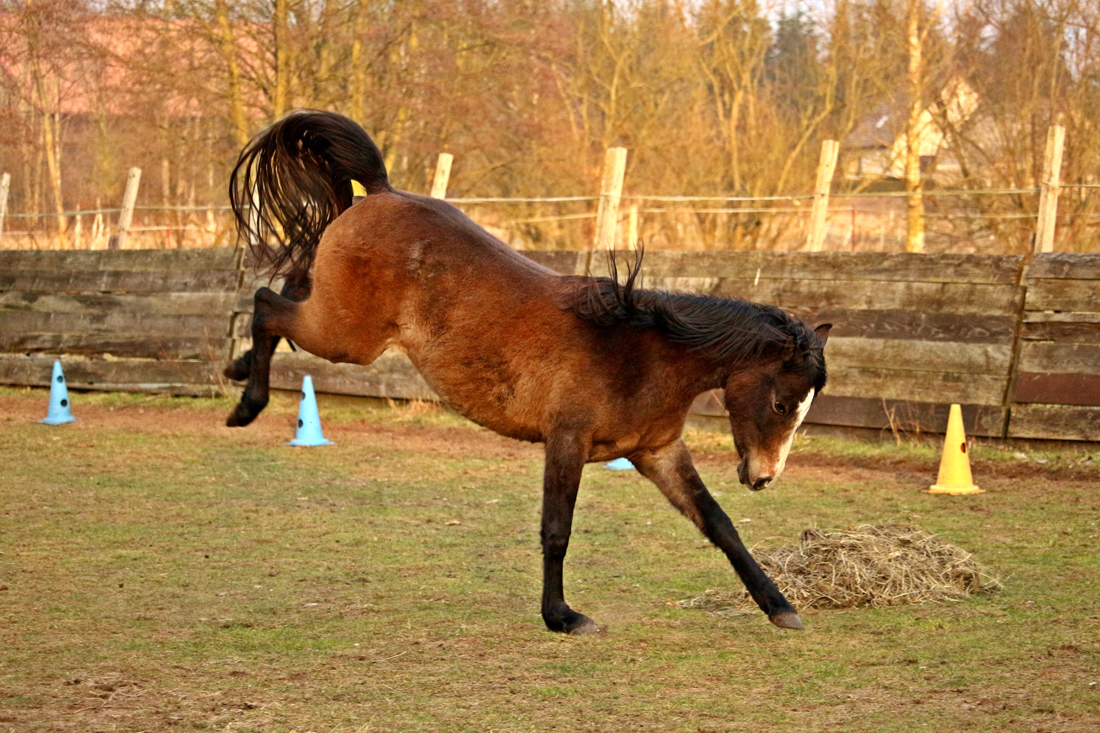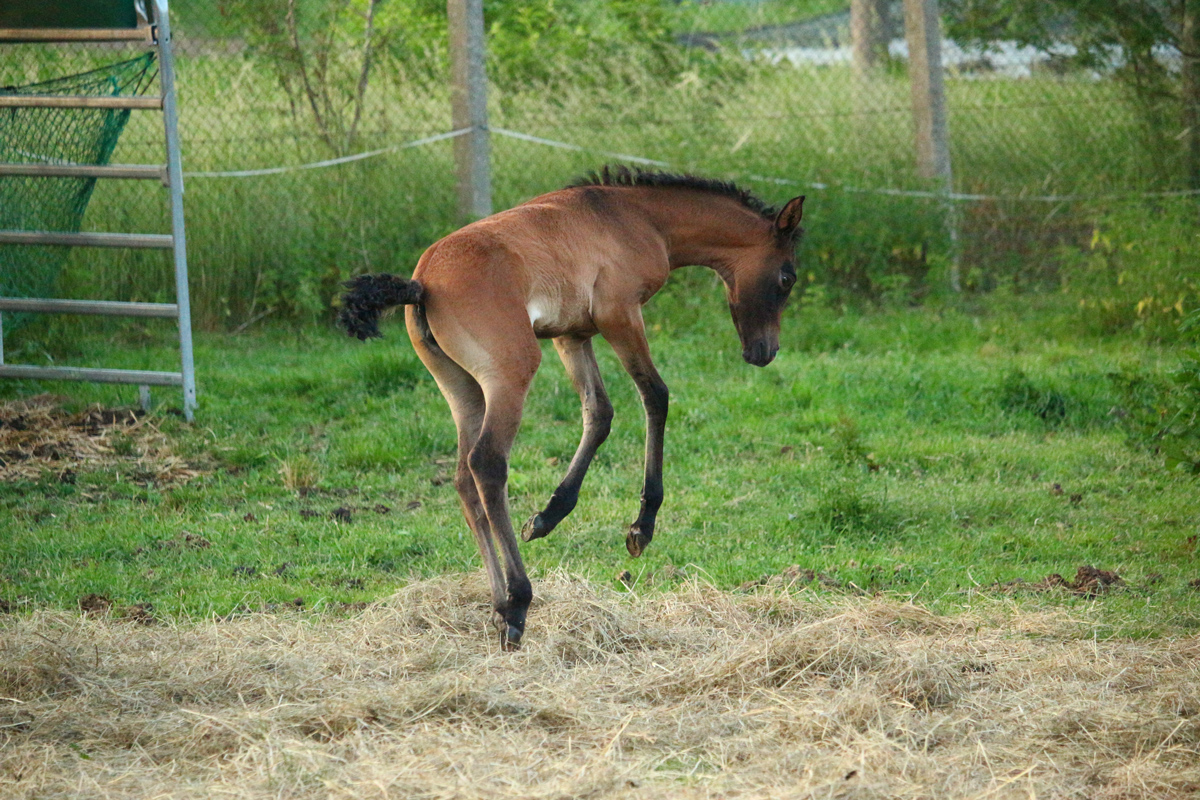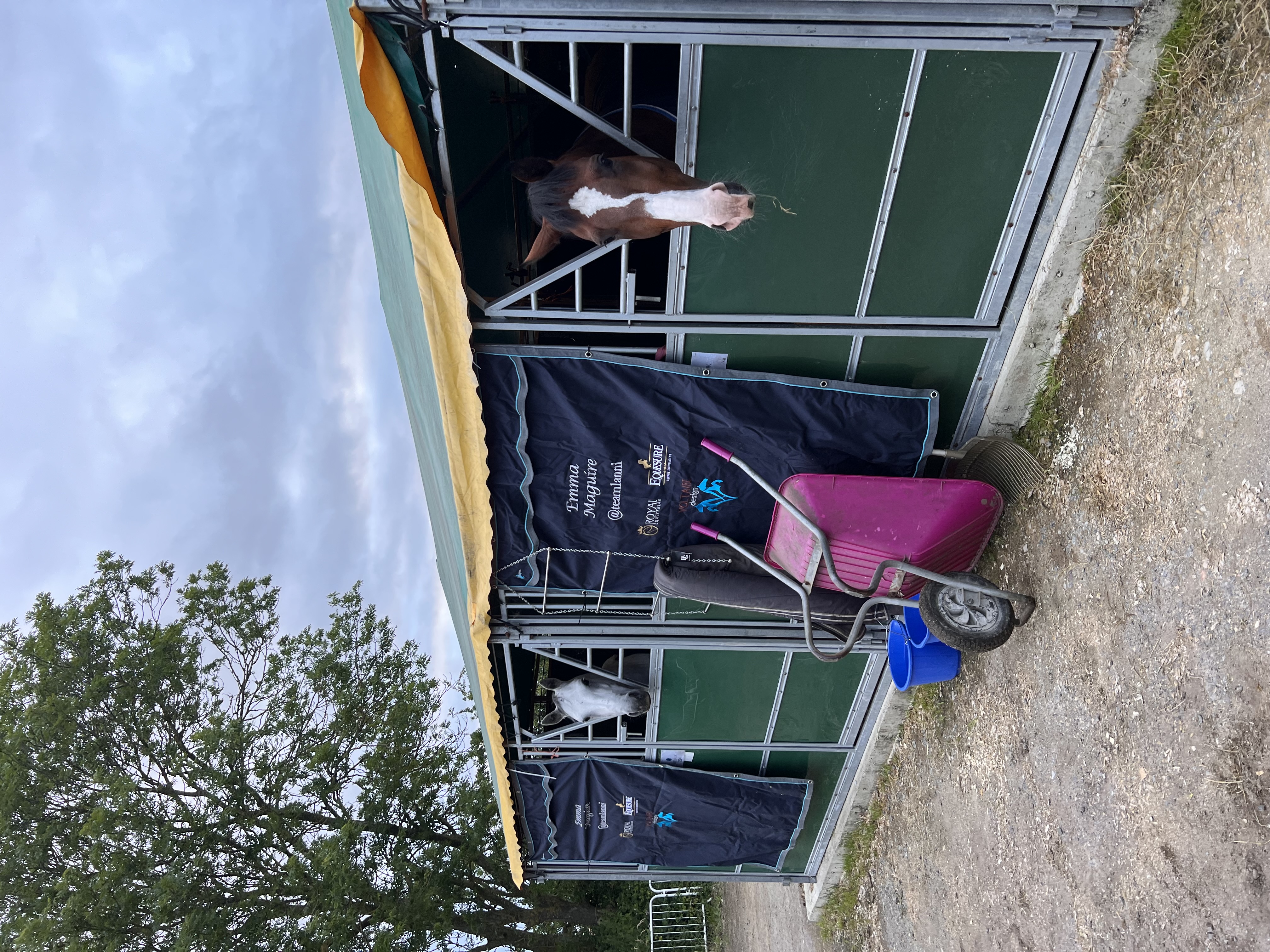Ever found that your gentle trot has suddenly become a rodeo? A bucking horse will turn a relaxing hack into a daredevil ride – but it’s no fun for you or your animal.
Pretty much every rider will be thrown from a bucking horse at some point – that’s why it’s so vital to wear a helmet and take out horse rider insurance for you and your children.
But why do horses buck, and what can you do about it? Read on for our quick guide.
What is bucking?
Bucking is when a horse or pony lowers its head and kicks out its hind legs, often unseating its rider in the process.
If you’re an experienced rider, you’re likely to recognise the signs that your horse is readying itself to buck.
You’ll feel its body tense up, and it could hump its back or become stiff when you’re trying to saddle up or while you’re riding.
Dismount if you feel uncomfortable, and try soothing your equine – otherwise, you’re setting yourself up for a potentially nasty tumble to the ground.
If you’ve got horse rider insurance arranged by Equesure, you’re covered for personal accidents up to £20,000 and personal dental treatment up to £1,750.

Why does my horse buck?
Bucking is a natural equine instinct.
It can be a sign of happiness or excitement, or a way of releasing pent-up energy – for example, after being let out into the paddock in the morning.
If there’s no rider on the horse’s back, and it has space to jump and kick, then bucking is not a problem.
However, if a horse is using bucking to try to unseat you or prevent you mounting, then that’s a different matter.
To nip it in the bud, you first need to understand the root cause of the problem.
It could be that your horse is reacting to pain. A sore back from a poorly fitting saddle is a common cause, while an aching mouth or feet are also possible triggers.
Internal troubles can also cause a horse discomfort and make it buck, so if you can’t immediately find a cause, it’s best to consult your vet for advice and tests.
Bucking could also be due to boredom, so make sure your pony gets a good amount of exercise and socialising time each day.
And it can be a reaction to being startled or spooked. If you know your equine is easily alarmed, it’s best to avoid triggers such as road traffic.
Bucking can be a sign that you’re not riding your horse correctly – perhaps you’re giving it confusing messages, e.g too strong leg cues or poor rein control.
But mostly, bucking is a sign of a young horse who’s tense or scared. Training is your key to a calmer, happier animal.
Training a young horse
Prevention is always better than cure, so it’s vital that you train your young horse in such a way that it does not develop a bucking habit.
Take care that you do not start your horse or pony too quickly, or confuse it with too many instructions at once, as this will make it tense up during its training and spark off its reflex to buck.
Instead, take your time and let your equine relax while it undergoes its paces. You’ll need to repeat each training step over and over again without showing frustration or trying to hurry your horse along.
Providing your horse has been checked for any pain issues first, when completing your training you can make sure you mount and dismount several times a day, so your horse gets used to the sensation and does not tense up.
Once it is relaxed with you on its back, get it to move forwards. Reward your pony for each step it takes without bucking by making a huge fuss of it.
Don’t be discouraged by a bit of bucking in the early stages. It may take a lot of effort, but in the long term, you’ll be rewarded with a calmer horse and fewer bruises!

Stopping a horse from bucking
Once an equine has learned it can throw off its rider, it’s hard to break its habit. However, bucking is potentially very dangerous to you and others nearby, so it’s essential you try to retrain your horse.
Above all, you need to build up a strong bond with your pony and let it know you are in control through gentle but firm body language and clear actions.
A horse can only buck if it can lower its head to knee level, so hold the reins so that you always have a connection with its mouth, and keep its head up with its neck soft.
You should seek advice and have lessons from an instructor to assist you in sitting the bucks and moving forwards with your training.
Sometimes, you may not be able to stop it bucking. In that case, you may have to hold on tight!
Once it’s calmed down, make sure you then ride it for a few metres rather than get off straight away, otherwise your horse will learn that bucking is an effective way of ridding itself of its rider.
If you’re thrown to the ground, it’s best if either you or another rider gets back on quickly.
Repeat the training process every day, and hopefully the horse should start to relax. Give it lots of praise during and after every training session, too.
You should only attempt to retrain your horse yourself if you’re an accomplished equestrian and you’ve got great insurance.
As well as accidental injury and dental cover, horse rider insurance provides third party liability cover in case your animal causes any damage to someone else or their property.
Get a quote from Equesure today
Horse riding is a wonderful sport for both animal and rider – but sometimes, accidents do occur.
Horse rider insurance arranged by Equesure offers you personal accident cover of up to £20,000, as well as cover for dental treatment. Your animal is covered for up to £1,500 for accidental visible injuries too.
Contact Equesure today to help keep yourself riding high in the saddle.





